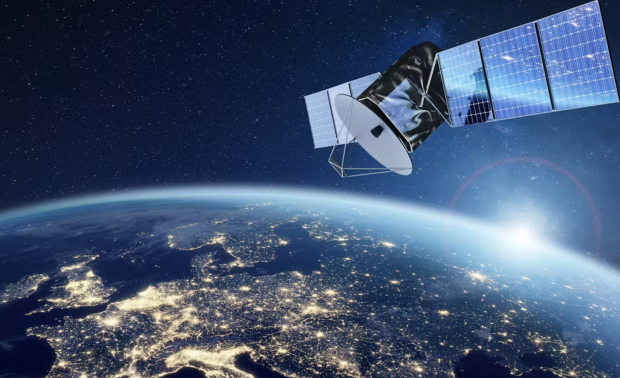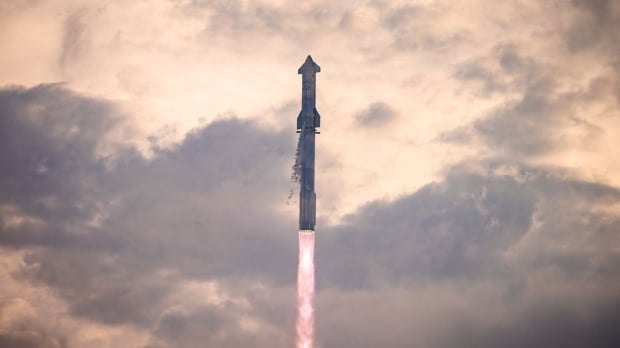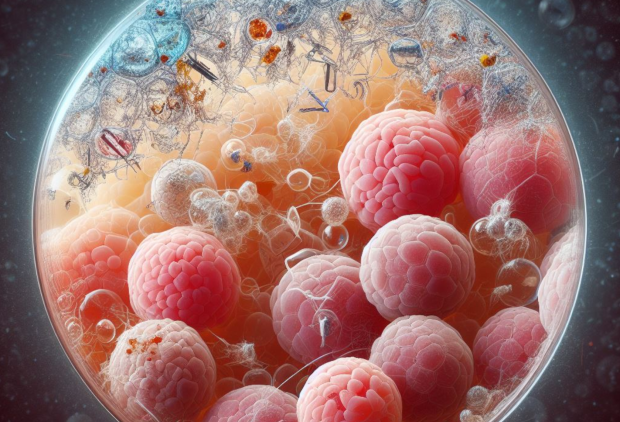Science, Space, Health & Robotics News - Page 1
US officials say Russia likely just deployed a secret space weapon
US government officials have said that Russia's recent rocket launch deployed a payload that is likely a classified space weapon capable of destroying satellites.
The warning comes from Robert Wood, the deputy US ambassador to the United Nations, who said last week Russia conducted a rocket launch, specifically on May 16, when it launched a satellite into low-Earth orbit that the United States has now assessed. According to Wood, the US has reason to believe the payload deployment is likely a counter-space weapon, and it's location is the "same orbit as a US government satellite".
More specifically, the Soyuz rocket's Fregat upper stage released Kosmos 2576 (the payload) into orbit approximately 275 miles above Earth at an inclination of 97.25 degrees to the equator. Notably, Russia's deputy foreign minister, Sergei Ryabkov, said the US's assessment of the payload is "fake news", but didn't provide any clarifying information.
Continue reading: US officials say Russia likely just deployed a secret space weapon (full post)
Massive explosion at SpaceX launch facility caught on video
SpaceX is currently undergoing rigorous testing of its Raptor rocket engines, which will be used by the company's next-generation rocket, Starship, the world's largest and most powerful rocket.
The Elon Musk-led company has been conducting research and development on its Raptor engines for quite some time now, and it appears to still be in the midst of tweaking and changing the engine design ahead of the highly anticipated fourth launch of Starship. According to a livestream of SpaceX's McGregor, Texas testing facility by NASASpaceFlight, a Raptor engine recently experienced an anomaly that resulted in an initial explosion and a secondary explosion.
The publication reports the secondary explosion on the test stand can be attributed to the vapors in the air from the first explosion. SpaceX hasn't officially offered any update on the explosion, and given how familiar SpaceX is with exploding rocket-related creations, it can safely assumed no one was injured from this explosion. For those that don't know, SpaceX's flagship rocket, Starship, uses 33 Raptor engines in its first stage booster called Super Heavy.
Continue reading: Massive explosion at SpaceX launch facility caught on video (full post)
Bright blue-green meteor caught in jaw-dropping videos turning night into day
A stunning meteor passed through the night sky at speeds of more than 100,000 miles per hour, causing a bright flash of blue-green light.
Skywatchers over parts of Spain and Portugal were reminded of the incredible beauty of the cosmos when an asteroid entered Earth's atmosphere at extreme speeds. The European Space Agency (ESA) confirmed the space rock was traveling at around 27.96 miles per second, and the space rock was actually a small piece of a comet. Additionally, the space agency said the chances of finding fragments of the astronomical object was very low as it likely burned up over the Atlantic ocean at an altitude of 37 miles.
What is most impressive about the comet fragment is how streaked across the sky, with the Scientists at the CSIC (Spanish National Research Council) estimate the fireball covered more than 310.69 miles before "going extinct". The event was captured by many people in both Spain and Portugal, and has since gone viral on social media as hundreds of videos were posted showing incredible light display from various locations.
Researchers confirm microplastics are now in human testicles
New research from the University of New Mexico has confirmed that microplastics have now been found within human testicle tissue.
A team of scientists analyzed testicular tissue taken from both dogs and humans and found microplastics in every sample. More shockingly, the human testicle tissue had a presence of microplastics three times higher than what was found in the dog testicle tissue. More specifically, the team discovered an average of 122.63 micrograms of microplastics per gram of tissue in canines, while human tissue was 329.44 micrograms.
The discovery of microplastics entering the male reproductive system has raised concerns about its presence impacting fertility, particularly after the team found canine samples that contained a higher quantity of polyvinyl chloride, correlated with lower sperm count in dogs. The team was unable to test the impact of polyvinyl chloride in the human tissue samples.
Continue reading: Researchers confirm microplastics are now in human testicles (full post)
Scientists discover blistering Earth-sized planet that may become historic
Astronomers published a new study in the scientific journal Nature Astronomy detailing the discovery of an exoplanet called SPECULOOS-3 b.
The newly found exoplanet is approximately 55 light-years away from Earth, which is in the world of astronomy is extremely close to our planet, given the vastness of the Milky Way. SPECULOOS-3 b orbits its host star once every 17 hours, and astronomers expect that its also tidally locked, meaning one side of the planet is perpetually being blasted by host stars light, while the other side is stuck in perpetual cold darkness.
Due to its proximity to its host star, SPECULOOS-3 b is being bathed in high amounts of radiation, peeling away any form of atmosphere the planet may have had at one stage. The lack of atmosphere and the impossibility of hosting water due to its extreme temperatures make SPECULOOS-3 b inhospitable to life as we know it, but that isn't why astronomers are excited about it.
Scientists bring frozen human brain tissue back to life for the first time
A group of scientists have managed to thaw frozen human brain tissue without causing any damage to the tissue itself.
The new research is coming out of the Fudan University in Shanghai, China, where a team led by Zhicheng Shao grew self-organizing brain samples that are called organoids. These organoids are grown from embryonic stem cells and take three weeks to fully mature. Once fully mature the brain tissue has developed neurons and neural stem cells, which means they are ready for experimentation.
The team then took these brain tissue samples and combined them with various chemicals with the goal of discovering which chemical compound would enable the brain tissue to survive being frozen and still enable growth following its thawing. According to the team's results, which were published in the scientific journal Cell Reports Methods, the most successful combination of chemicals was methylcellulose, ethylene glycol, DMSO, and Y27632 - together, the solution is called MEDY.
NASA officially releases video of the biggest solar flare in last 20 years
It was only recently that NASA confirmed a massive solar flare taking place on the surface of the Sun, with officials confirming its the biggest solar eruption of the last 20 years and this 11-year cycle.
The solar flare took place at 12:51 pm ET on May 14 and was captured by NASA's Solar Dynamics Observatory. For those that don't know, a solar flare happens when the Sun's magnetic field lines are contorted and snap, resulting in a massive outburst of X-rays and ultraviolet radiation. These solar eruptions can significantly impact Earth by causing interference with satellite communications, power grids and GPS signals.
Additionally, a solar flare can typically be paired with a coronal mass ejection (CME), which is a blast of solar plasma, or charged particles. When these charged particles either from the CME or the initial flare hit Earth they can produce auroras to appear at lower altitudes, or further south than they typically do. NASA JPL compiled the images of the May 14 solar flare and placed them into a video, which can be seen above.
Elon Musk announces Neuralink is ready to accept its second brain implant patient
The first human to accept a Neuralink brain chip implant was able to control a PC through their thoughts, and now the Elon Musk-led company is looking for its second participant.
In early March, Neuralink showcased a 29-year-old man named Nolan Arbaugh, who was unfortunately paralyzed from the neck down following a tragic diving accident eight years ago. Arbaugh demonstrated the capabilities of the Neuralink brain chip called "Telepathy" in a video that showed him controlling the cursor on a PC and even playing a game of Mario Kart against another player.
Neuralink has since taken to its official X account to share a video of Arbaugh talking about his motivations behind agreeing to participate in the trial, saying that he wants to help future quadriplegics based on what is learned from his involvement now. Notably, Arbaugh said the surgery for the brain implant was "super easy," and there was a significant learning process to differentiate "imagined movement versus attempted movement" in order to control a cursor on a PC.
NASA confirms record-breaking solar eruption triggering radio blackouts
Officials have confirmed the Sun has launched the strongest solar flare of this solar cycle, an 11-year period that takes the Sun from its least active to its most active.
The National Oceanic and Atmospheric Administration's (NOAA) Space Weather Prediction Center recently announced the eruption of a solar flare that measured X8.7, which resulted in radio blackouts and widespread auroras around our planet. Notably, researchers pinpointed the source of the massive solar flare to the sunspot region 3664, which reports indicate measure at least 15 Earths wide.
For those that don't know, a solar flare is caused by magnetic disturbances in the Sun, specifically when the magnetic field lines of the Sun are twisted and contorted. The snapping of these magnetic field lines results in the release of powerful exertion of X-rays and ultraviolet radiation. Additionally, a solar flare can also release what is called a coronal mass ejection (CME), which is a powerful wave of charged solar particles that can hit Earth if the planet is in the direction of its trajectory.
Scientists breakthrough with 'world's purest silicon' set to power next-gen computers
A team of researchers has created an advanced version of silicon that could be used as the foundation for the next generation of computing.
The new breakthrough technology is described as an extremely pure form of silicon, the semiconductor material used in traditional computers, and has been detailed in a new study published in the journal Nature Communications Materials. According to the paper, the new form of silicon could be used to bring quantum computing to silicon-based hardware, making these powerful next-generation computers much more accessible to everyone.
A rudimentary explanation of quantum computing is as follows. Traditional computers operate by encoding in binary, 1's or 0's. A quantum computer can encode data separately and in both 1's and 0's, or what is called a qubit, superposition of both of these states. This state is called "coherence" and enables processing calculations much faster than traditional forms of encoding. However, quantum computing has its challenges, as qubits have proven to be "noisy," which means outside elements can easily interfere with the stability of the quantum state of data.










